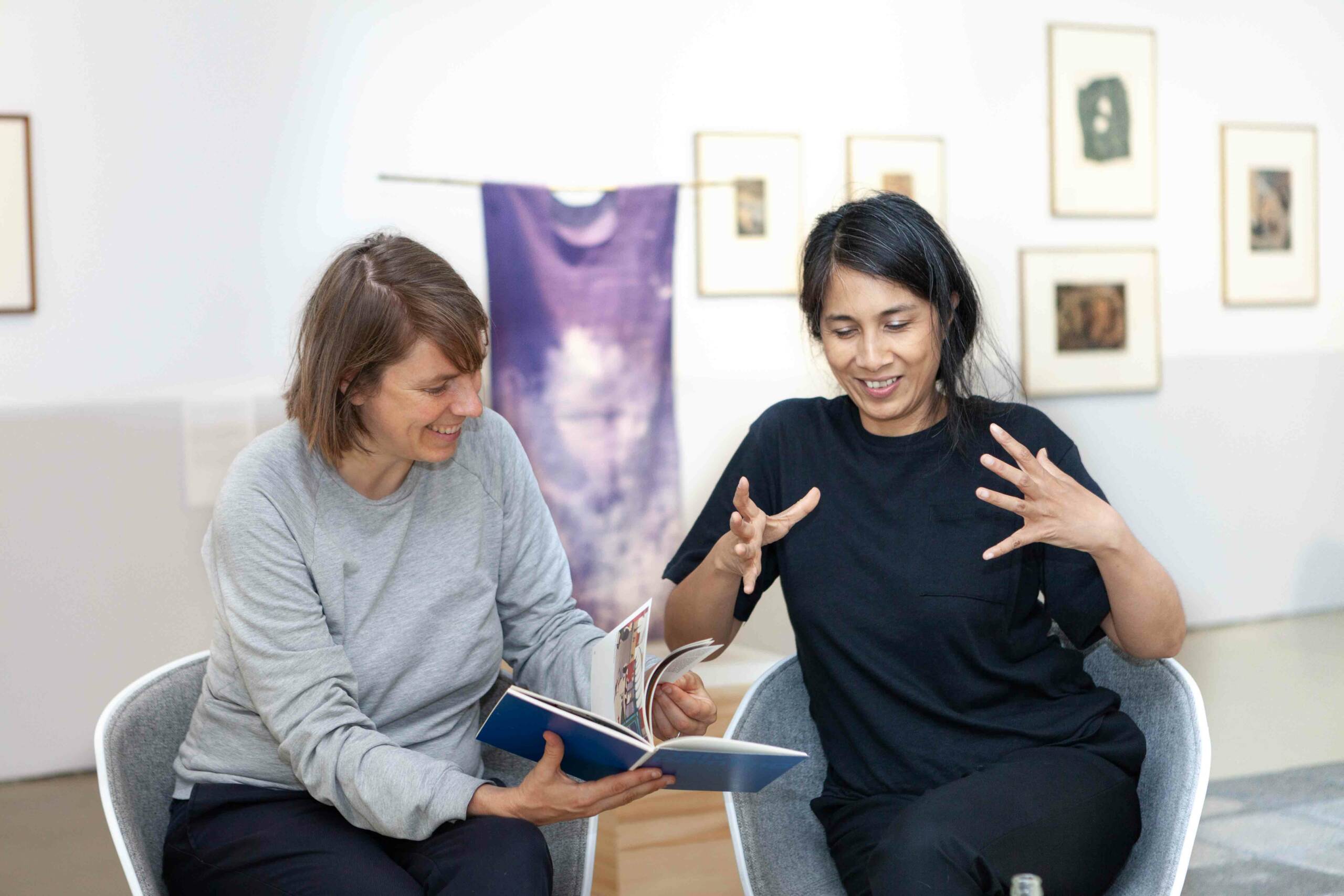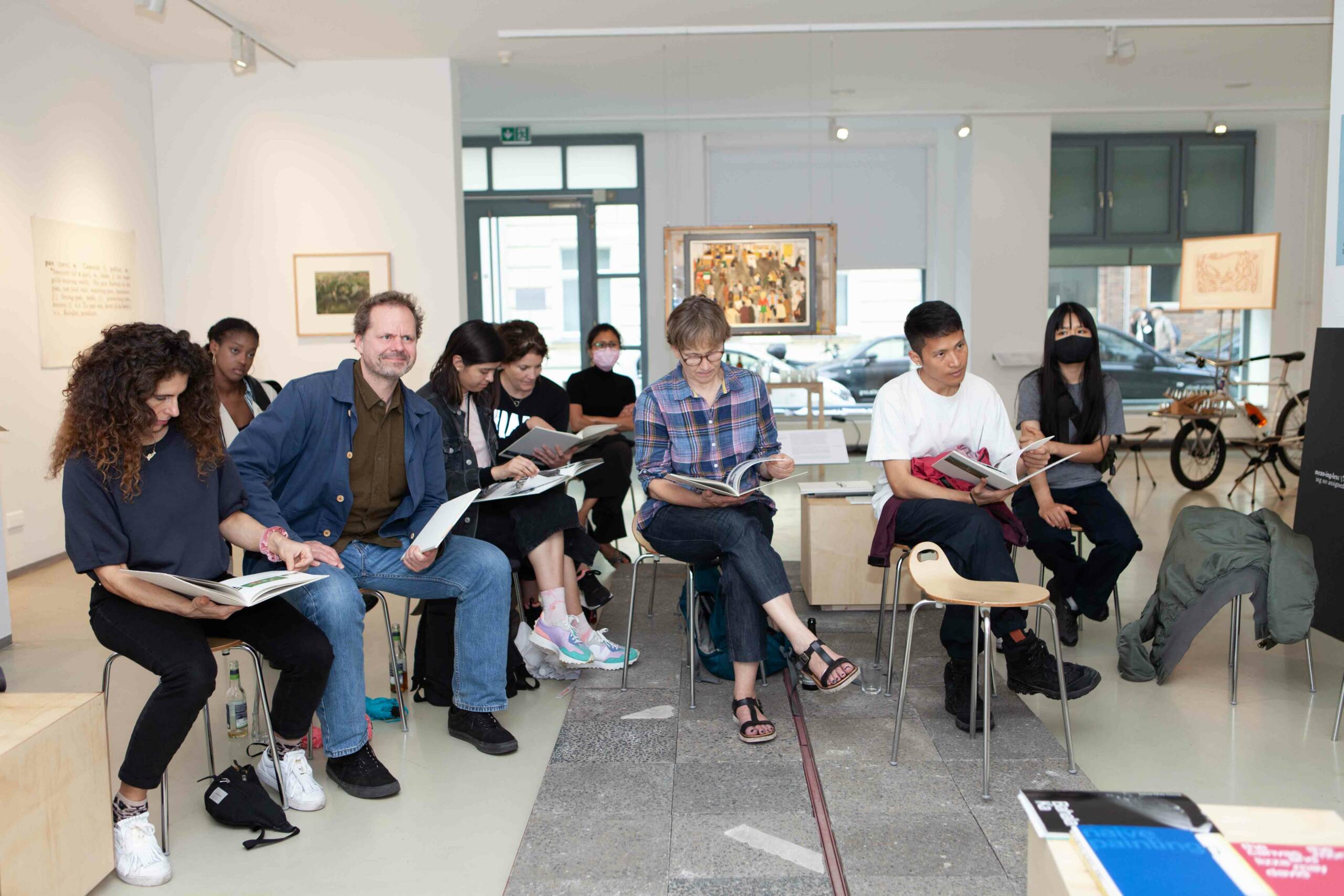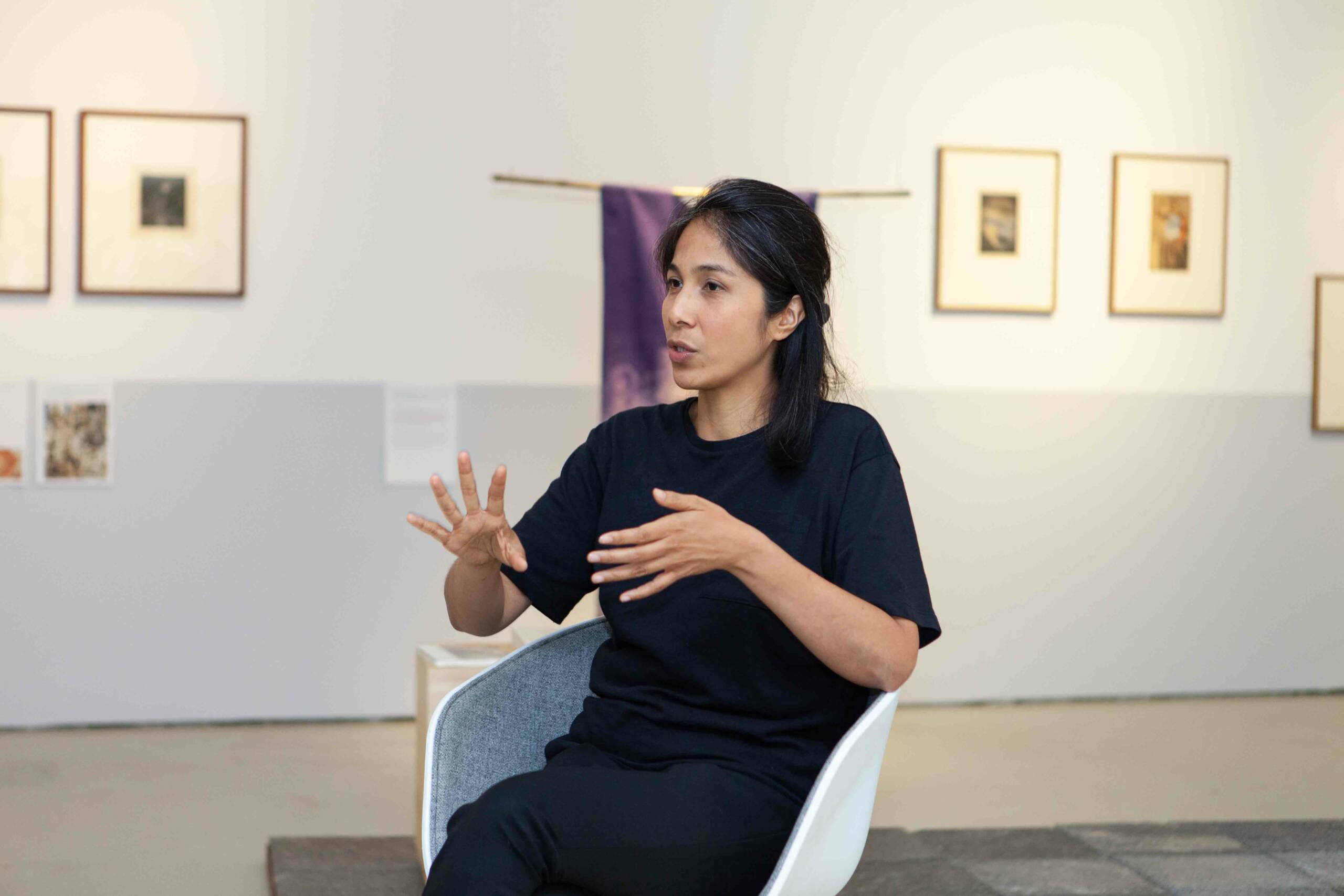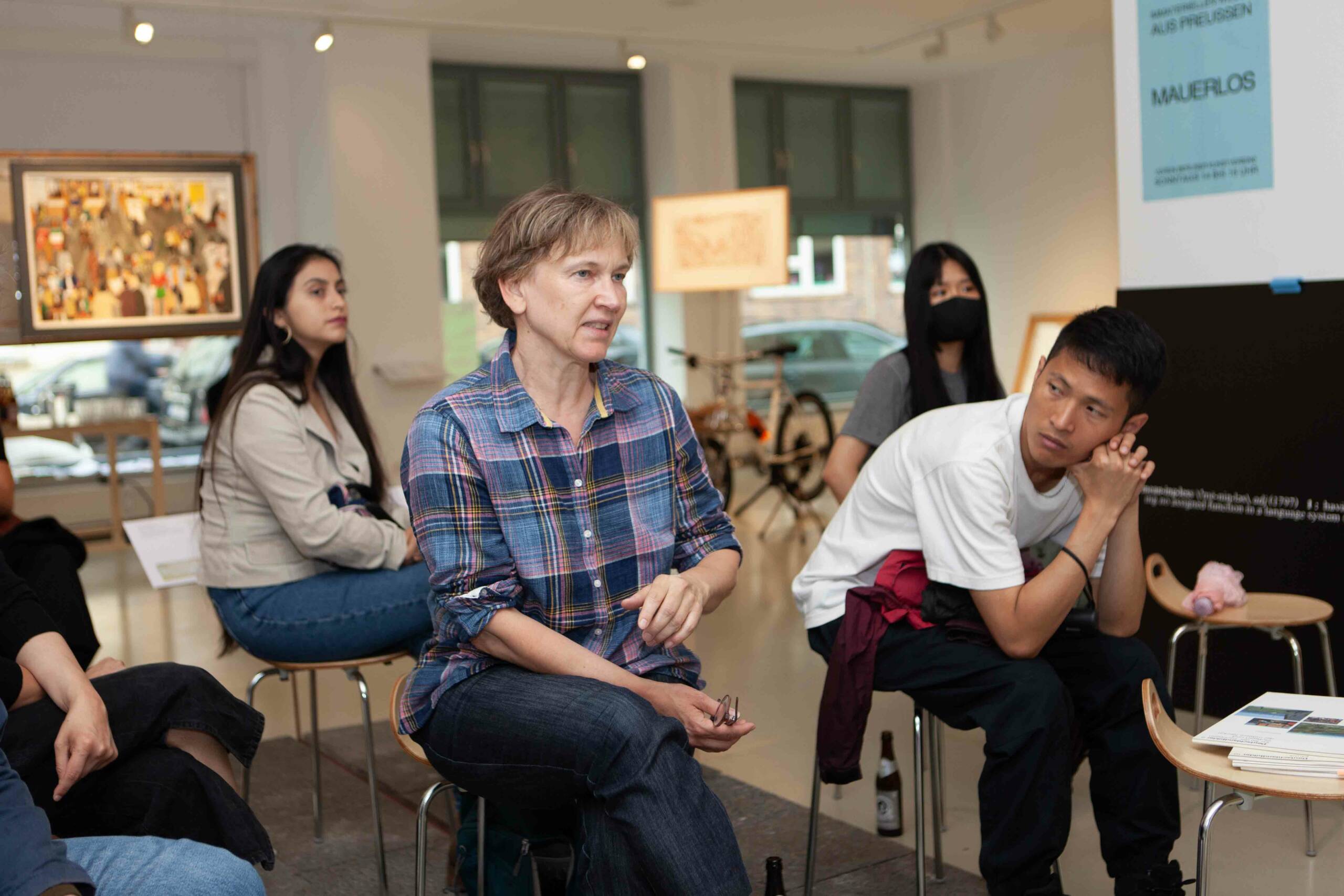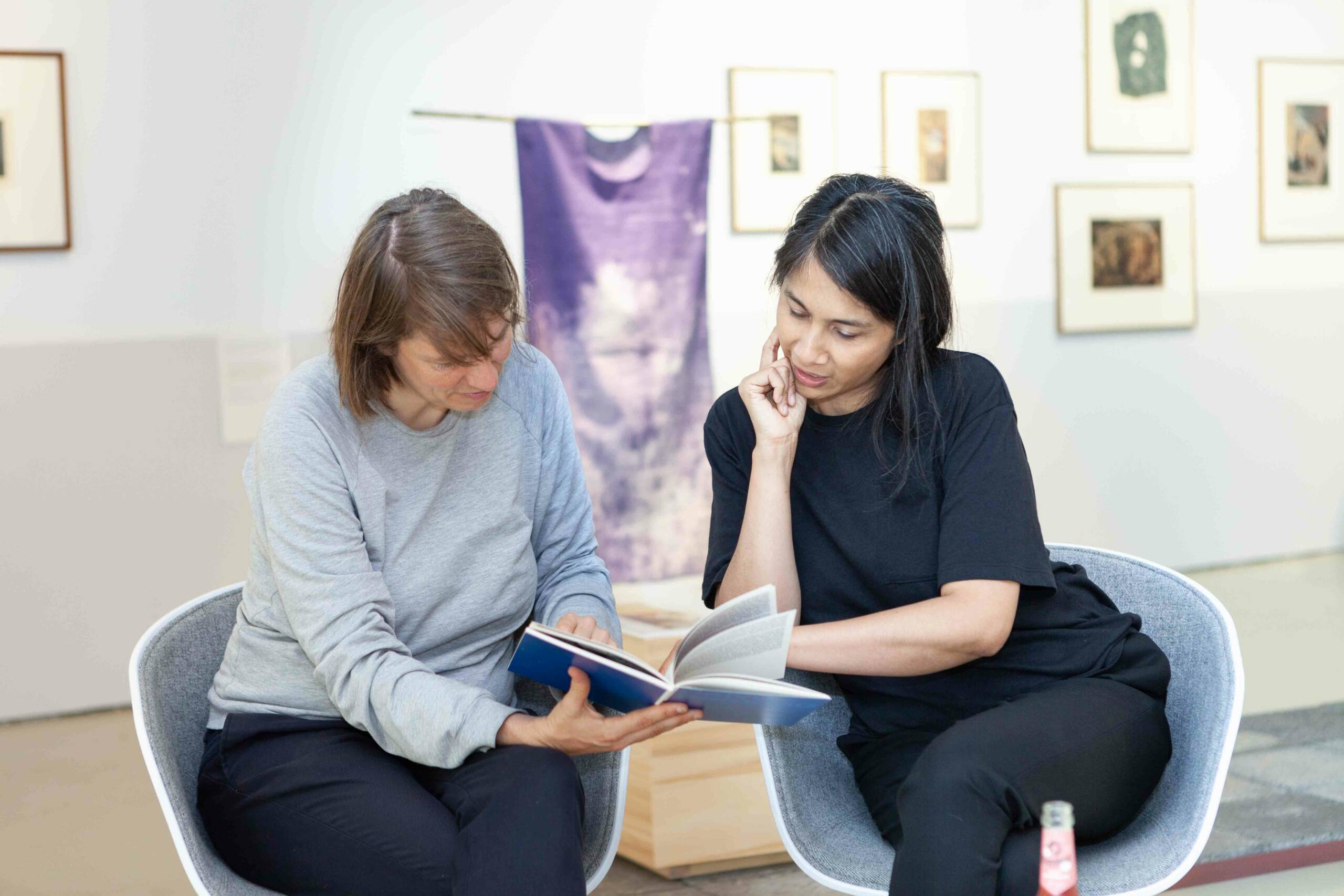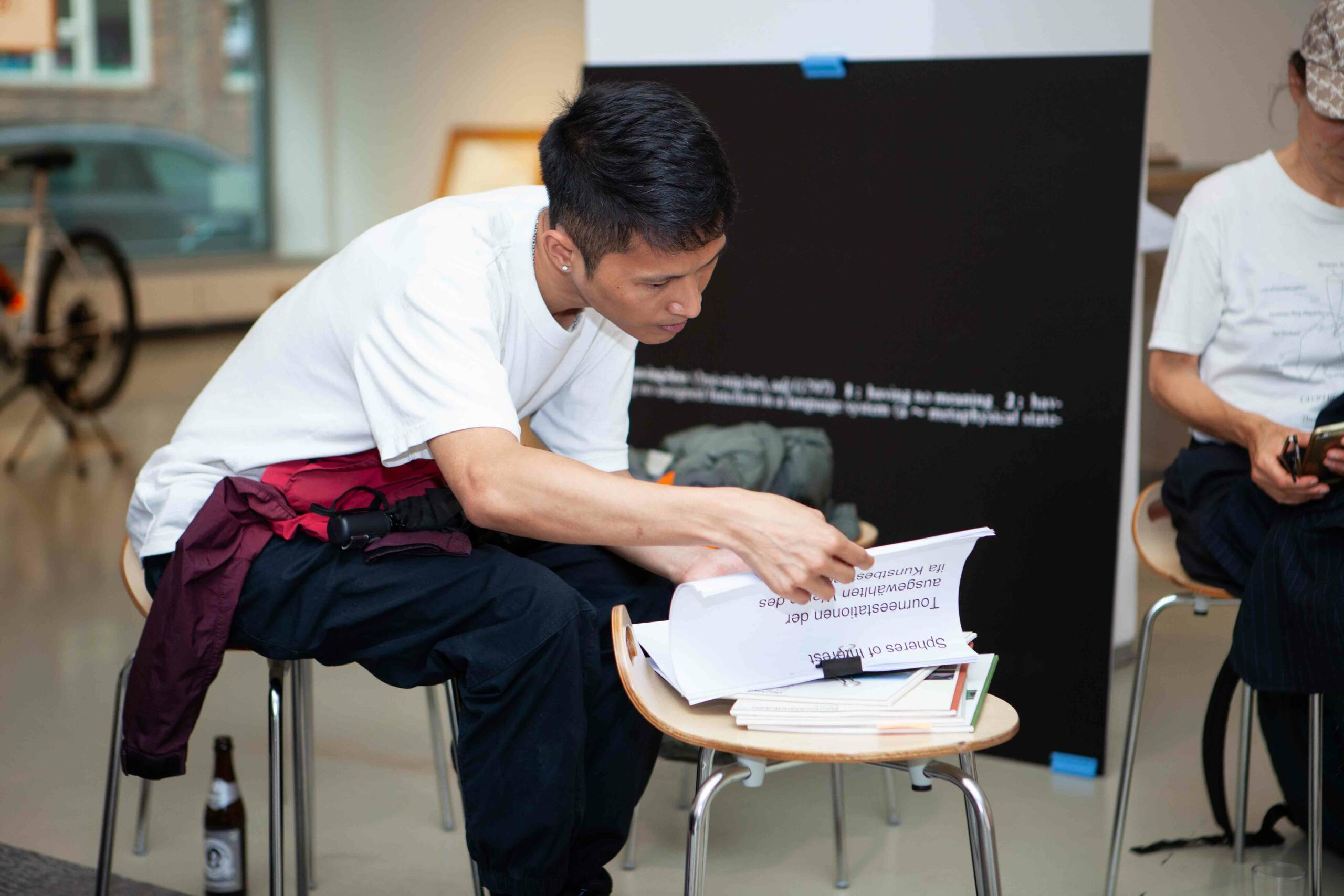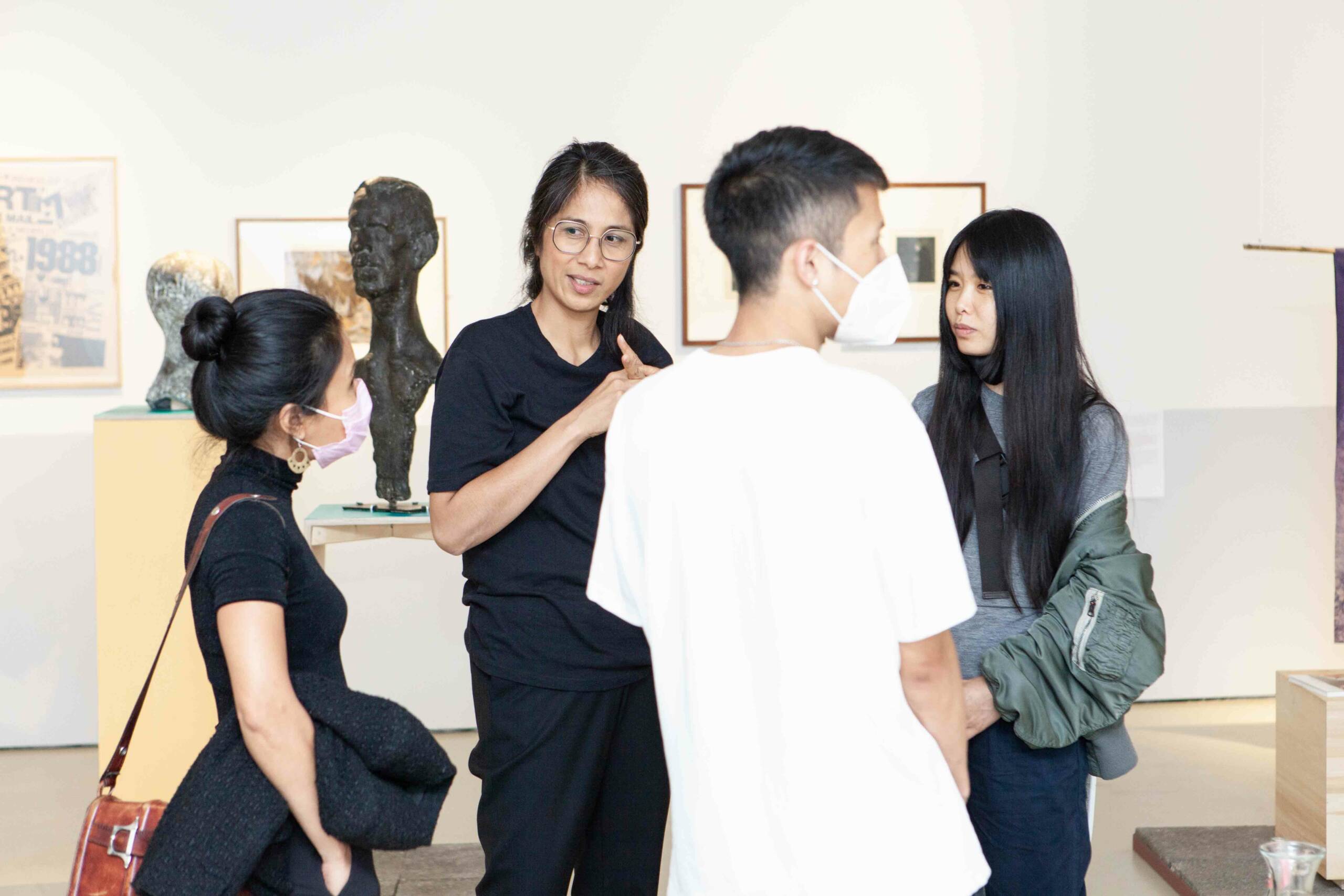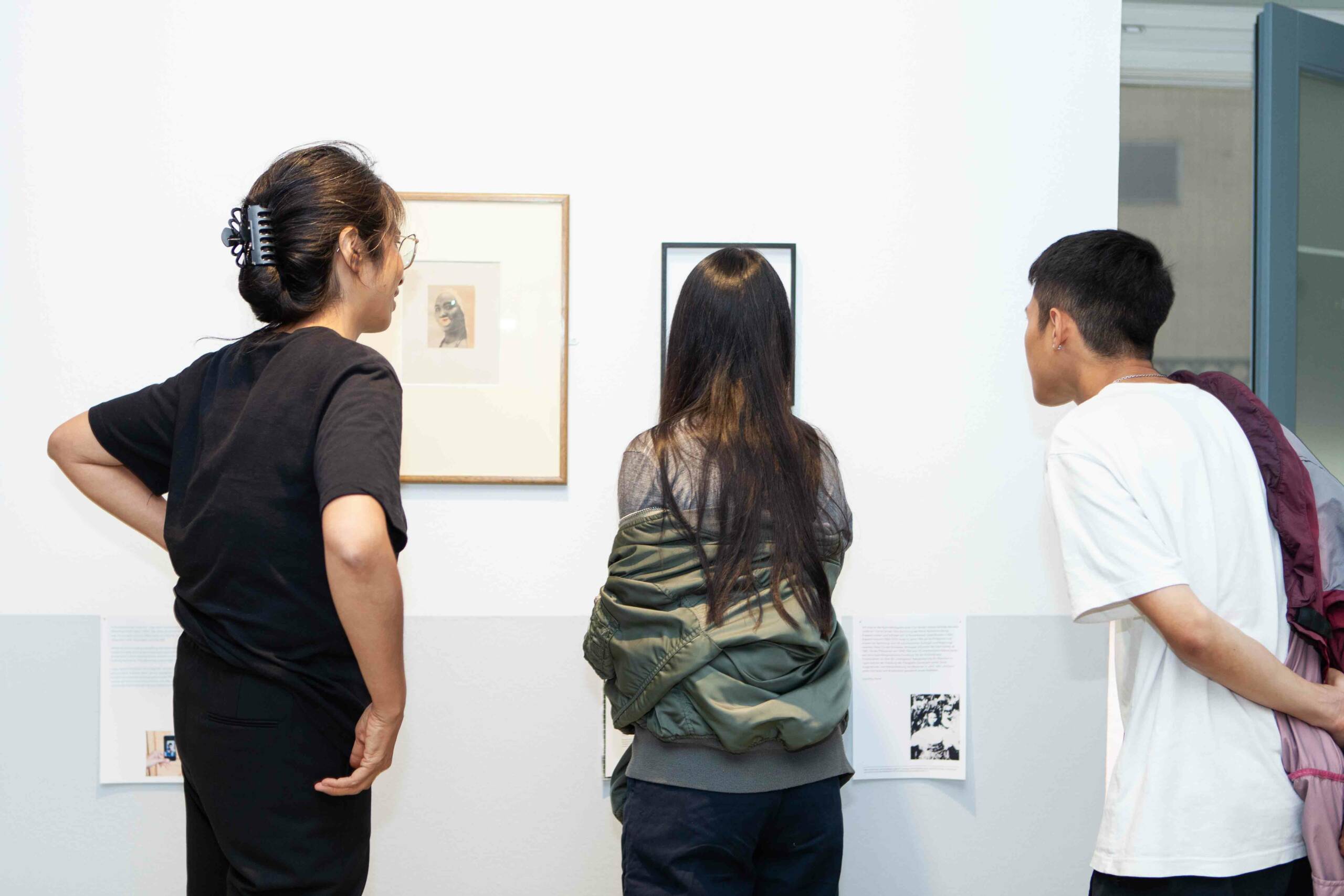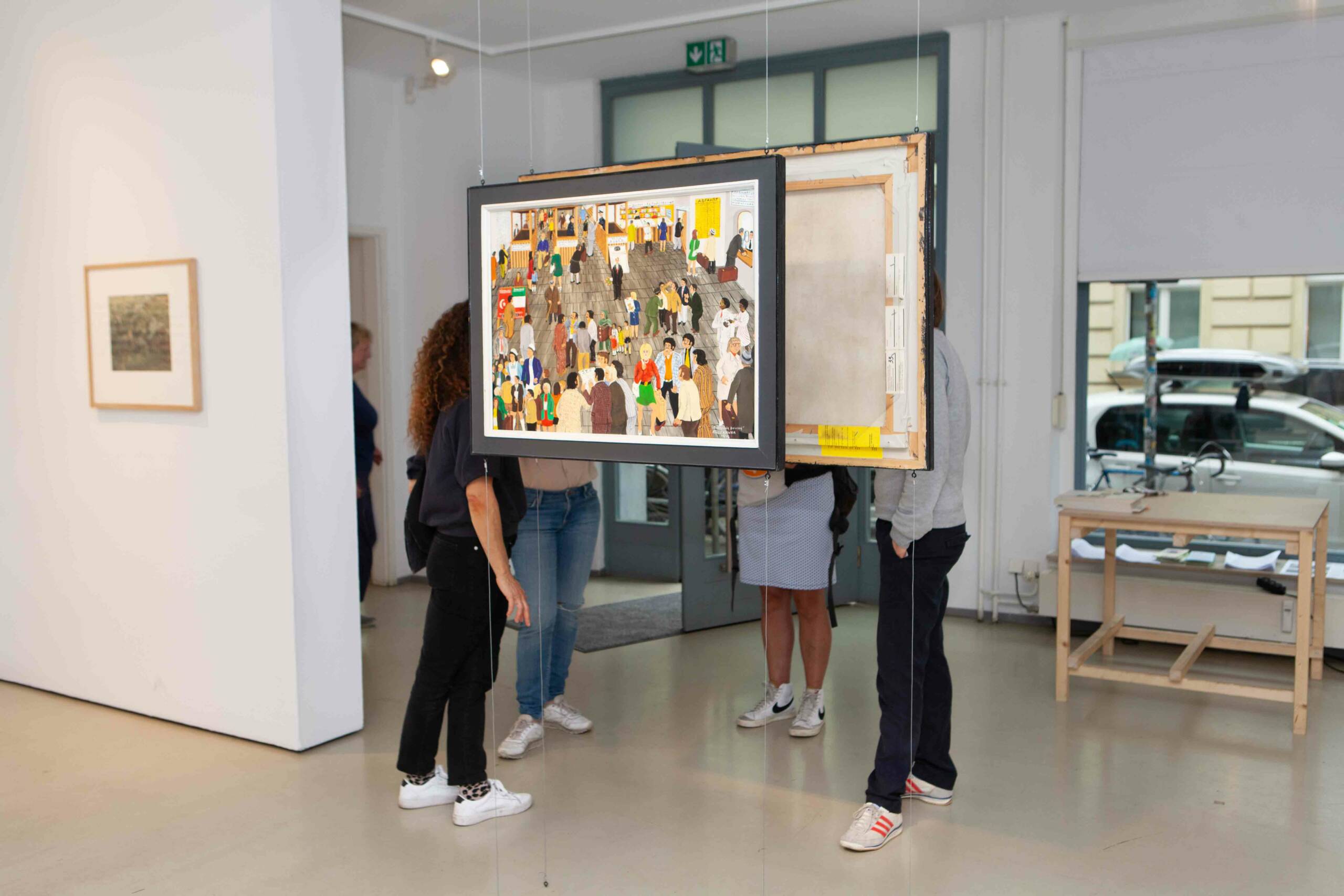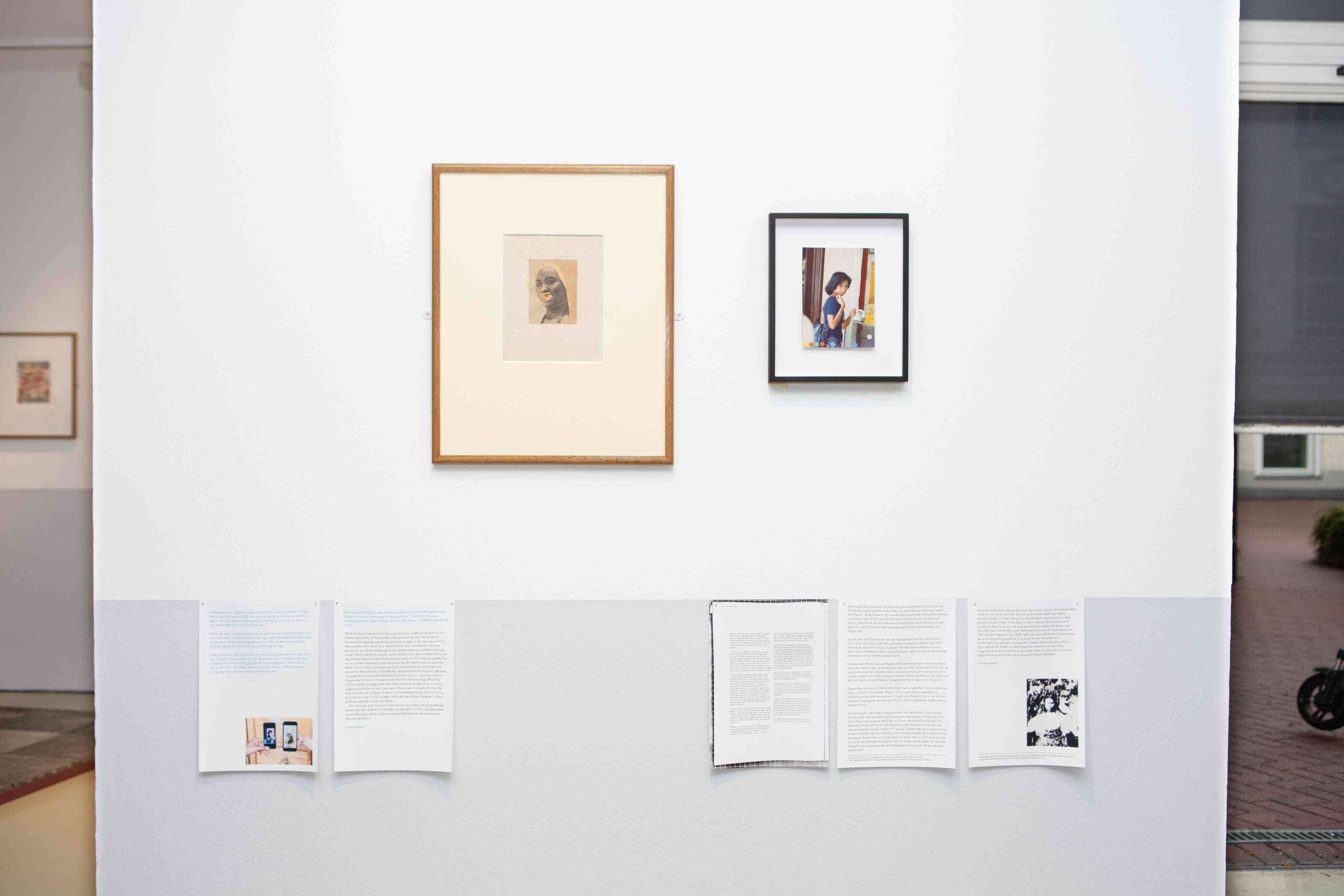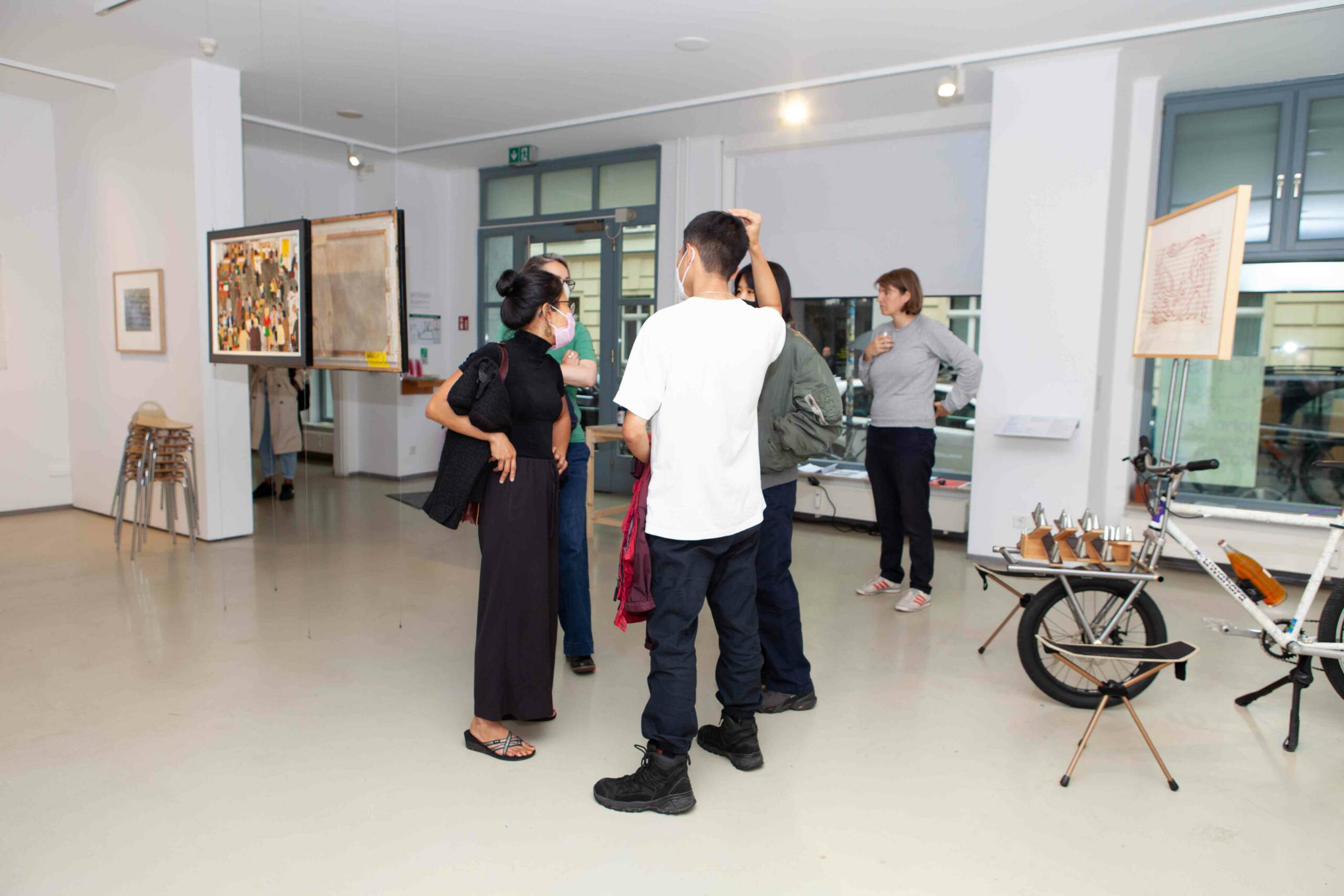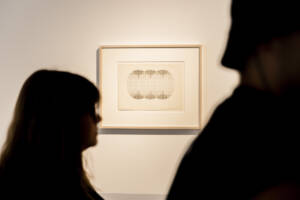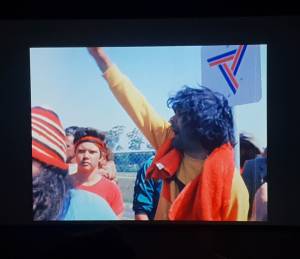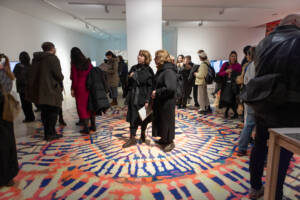In conversation with author and artist Anna-Lena Wenzel.
On her search for a “Deutschlandbild”, or an image of Germany, that had travelled the world in touring exhibitions, Lizza May David came across a past exhibition titled “Naïve Malerei aus Deutschland” (Naive Painting from Germany). Working from her sensitivity for the hierarchical and racist implications of terms such as “naive painting” and “Mischling” (half-breed), she chose three works from the collection and has commented on them in personal texts. She is primarily interested in the Dortmund painter Franz Klekawka, an autodidact who documented his daily life in Germany’s Ruhr region in his artwork. She has chosen two paintings that drew her attention due to their depiction of so-called guest workers. In Hannah Höch’s work, she problematises the title “Mischling”. David takes these selected works as an opportunity to point out the role of the white gaze in drawings and photography, as well as examining her own complicity in that gaze.
Lizza May David is a painter and a transdisciplinary artist. She engages with omissions in personal and collective archives through abstract painting, installations, architectural interventions and collective works. She seeks to undermine the binary oversimplifications of the world by thinking relationally in terms of intersections, turning points and bifurcations, all while experimenting with forms of activation and disruption.
Lizza May David (*1975 in the Philippines) lives and works in Berlin. She studied at the Academy of Fine Arts, Nuremberg, at the École nationale supérieure des beaux-arts de Lyon (France) and at the Berlin University of the Arts. Her most recent exhibitions include Transition Exhibition at the Brücke-Museum, Berlin (2022); Die Vibration der Dinge Triennale Kleinplastik Fellbach (2022); Recent Aquisitions at the Ateneo Art Gallery, Manila (PH, 2022); and Bahala Ka [What do I know?] at the Kunstverein Hildesheim (2020).
